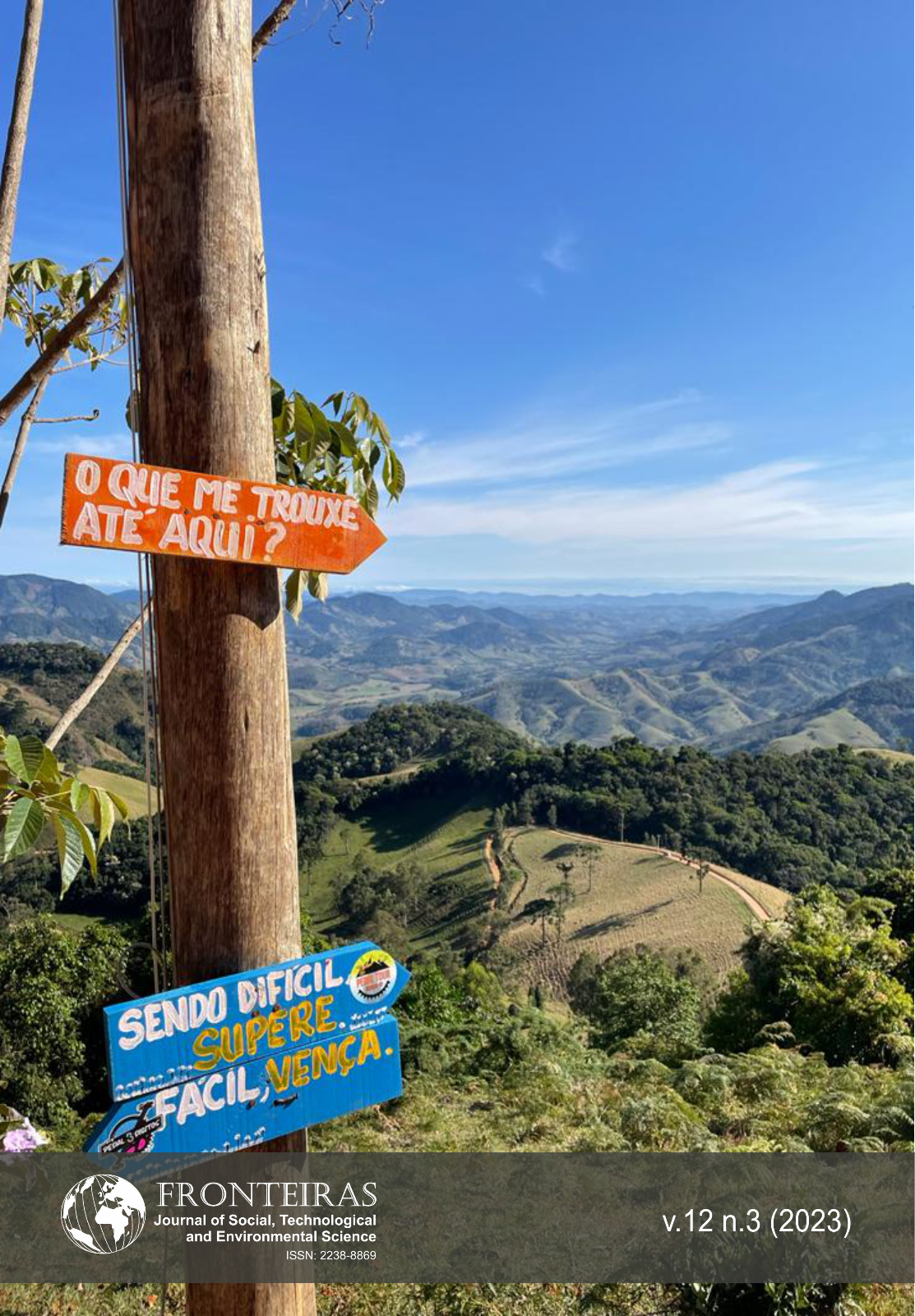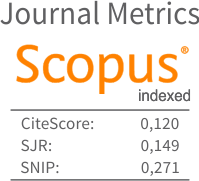Psychomotricity and Microcephaly: A Longitudinal Case Study with an Adolescent
DOI:
https://doi.org/10.21664/2238-8869.2023v12i3.p239-249Keywords:
psychomotor performance, microcephaly, adolescentAbstract
In Brazil, the Ministry of Health considers microcephaly as an emergency problem in public health, and psychomotricity, in turn, offers work through activities directed at the child's motor system. These activities are intended to assist in understanding one's own body and its potentials, and play a significant role in shaping global development, acting as a fundamental component in the individual's learning process. Thus, the objective of the study was to verify the effect of psychomotricity sessions on the motor development of a 15-year-old adolescent with microcephaly. This was a longitudinal case study with 4 months of intervention, three times a week lasting between 30 and 40 min. Improvement in the score in all psychomotor elements evaluated was noted, from 4 points to 8 points in Coordination and balance, 1 to 5 points in the body schema, from 6 to 11 points in laterality, from 5 to 10 points in spatial structuring, and from 1 to 5 points for temporal orientation. There was an improvement in the body schema and temporal orientation, in which the adolescent was previously classified as having a lived body image (up to 3 years old), and after intervention classified as reorganization of the lived body (3 to 4 years and 6 months). Although quantitatively the adolescent still had a classification far below his age, there is a qualitative improvement in terms of recognition of himself and others; face to face; spatial terms; progression of size and reproduction of spatial structures; and understanding of some temporal notions. Therefore, 16 weeks of psychomotor activities led to improvements in developmental tasks involving balance, strength, coordination and laterality, and spatial notion.
References
Almeida SCP. 2019. The Importance of Sound in Sensory Processing in Children with Autism Spectrum Disorder: A Case Study of Exploring the School Environment with Sensors (Doctoral dissertation, Instituto Politecnico de Viseu (Portugal) ProQuest Dissertations Publishing, 29018135.
Assunção IDS. 2018. Motor development and microcephaly: a review study. [cited March 17, 2022]. Available at: https://repositorio.ufrn.br/handle/123456789/44090
Barata LF, Branco A. 2010. Phonoarticulatory Disorders in Down Syndrome and Early Intervention. Cefac Magazine. 12:1
Barbosa GO, Van Munster MDA. 2012. Attention Deficit Hyperactivity Disorder: Motor Changes. Brazilian Society of Adapted Motor Activity. 13(2): 25-30.
Bardin L. 2022.Content Analysis. 4th ed. Lisbon Portugal:Editions70.
Brazil, Ministry of Health. 2016. Surveillance protocol and response to the occurrence of microcephaly and/or Central nervous system (CNS) alterations, Brasília-DF, version 2.
Cunha ACBD, Guimaraes EDSM, Albuquerque KA, Monteiro LF. Impact of microcephaly on the mother-baby bond and its repercussions for child development. USP Psychology. 2022;33. Available at: https://doi.org/10.1590/0103-6564e190098
Costa PRLDA, Aragão FBA, Serra JDN, Andrade MS, Reis AD, Nascimento MDDSB. 2020. Quality of Life of Mothers of Children with Congenital Syndrome Affected by the Zika Virus. Paulista Journal of Pediatrics. : 39.
Cunha ACBD, Guimaraes EDSM, Albuquerque KA, Monteiro LF. 2022. Impact of microcephaly on the mother-baby bond and its repercussions for child development. USP Psychology. 33. Available at: https://doi.org/10.1590/0103-6564e190098
Eickmann SH, Carvalho MDCG, Ramos RCF, Rocha MÂW, Linden VVD, Silva PFSD. 2016. Congenital Zika virus infection syndrome. Public Health Notebooks. (32): e00047716.
Falcone EM. 2018. The theoretical and philosophical foundations of cognitive-behavioral approaches. History of Psychology: directions and paths. Cap: 12.
Fernandes JMGA, Gutierres Filho PJB, Rezende ALG. 2018. Psychomotricity, play and body-in-relationship: contributions to the intervention.Cad. Bras. To have. Occupy San Carlos. 26(3): 702-709. Available at: https://doi.org/10.4322/2526-8910.ctoen1232
Ferraz C. 2021. Psychomotricity and human development. First Evolution. 1(19): 21-15.
Florencio VRC, Pontes NC, Freire VCC. 2021. Psychomotricity as an early stimulating agent in children with microcephaly. Teaching Perspectives. 2(3):1–12. Available at: https://revistas.uece.br/index.php/ensinoemperspectivas/article/view/6562
Fonseca, V. 2010. Psychomotricity: a personal view. Psychopedagogical construction.; 18(17):42-52.
Fonseca V. 2008 Psychomotor development and learning. Porto Alegre: Artmed;.
Gallahue DL, Ozmun JC. 2013.Understanding motor development: infants, children, adolescents and adults. 7th ed. Sao Paulo: Phorte.
Gonçalves IAM. 2012. Psychomotricity and autism spectrum disorders in the APPDA-Lisbon resource center for inclusion. Doctoral thesis. Available at: file:///C:/Users/Paricia.Espindola/Desktop/MICROCEFALIA/Gon%C3%A7alves%202012.pdf
Lordani SFS. 2020. Psychomotor Activities for Early Childhood Education: Preventing Learning Disabilities. Dissertation -Professional Master's Program in Teaching. State University of Northern Paraná, Paraná.
Machado CF, Gomes TVB, Ortigas PR, Benda RN. 2022. Motor performance in children and adolescents with Autistic Spectrum Disorder (ASD): an integrative literature review. Research, Society and Development. 11(4): e1011426692-e1011426692.
Marcuzzo S, Dutra MF, Stigger F. et al. 2008. Beneficial effects of treadmill training in a cerebral palsy-like rodent model: Walking pattern and soleus quantitative histology. Brain research. p.129 – 140.
Nepomuceno S, Alcantara EFS. 2018.Psychopedagogy in search of help for the microcephaly generation. Episteme Transversalis.8:2.
Oliveira GC. 2018. Psychomotor assessment in the light of psychology and psychopedagogy. 13th edition Petrópolis-RJ: Voices.
Oliveira GC. 1997. Psychomotricity: education and re-education in a psychopedagogical approach. 6th ed. Petrópolis, Rj: Voices. 141p.
Orbano, TS., Soares, V., Fernandes, MH., Mendanha, LPM., Teixeira Junior, J., & Venâncio, PEM. 2018. Motor coordination and body scheme of children from 2 to 6 years of age at the municipal center for Early Childhood Education in Silvânia-GO. Interdisciplinary Journal of Health Promotion, 1(4), 226-232. https://doi.org/10.17058/rips.v1i4.12362
Oza CS, Giszter SF. 2014.Plasticity and alterations of trunk motor cortex following spinal cord injury and non-stepping robot and treadmill training. Exp Neurol.256: 57-69.
Paiva MS, Nardin M, Streiff T. et al. 2010.Benefits of Physical Exercise for Children and Adolescents with Cerebral Palsy: A Literature Review. Rev. Acta Fisiatrica.17(4): 175-179.
Pedro ACC. 2019. Impact of oral motor impairment and systemic conditions on the health-related quality of life of children and adolescents with Moebius sequence and Down syndrome. Doctoral thesis. University of Sao Paulo. Doi: https://doi.org/10.11606/D.23.2020.tde-26092019-154321
Pimentel CS, Catrini M, Arantes L. 2021. Language and Body Size in Congenital Zika Virus Syndrome: A Case Study. Work Language Applications, Campinas. 60(2):483-499. Available at: https://doi.org/10.1590/010318131010081620210524
Pinheiro DAJ. 2017. Special children for special families: the meanings of motherhood for mothers of babies with microcephaly in Pernambuco. Available at: http://creativecommons.org/licenses/by-nd/3.0/br/
Ramos DK. 2019. Digital Games and Executive Functions in Childhood: alternatives to curriculum diversification. Revista e-Curriculum.17(3): 1373-1392.
Rezende LM, Moreira OC, Caldas LR, Freitas L, Torres JDOR. 2015. Psychomotor performance of people with disabilities after 12 weeks of an adapted physical education program. Brazilian Journal of Science and Movement. 23:38-46.
Ribeiro, K.; Baladore, TA.; Dessuy, AF. 2022. Psychomotor assessment in preschool children aged 4 to 6 years: a physiotherapeutic view. Evidência, Santa Catarina, p1-12,. Available at: https://doi.org/10.18593/eba.27095. Accessed on 3 Jun. 2022.
Rossi F. 2012.Psychomotricity in Early Childhood Education. Rev. Voices.
Sa LMSDMP. 2013.Early intervention and microcephaly: effective intervention strategies (Doctoral dissertation). Available at: http://hdl.handle.net/10400.26/4571
Sandri LSL. 2010. Psychomotricity and its benefits. Rev. of Education at IDEA, Getúlio Vargas. 5(12): 2-14.
Santana, BJRC. 2019. Experimental microcephaly: study of somatic, sensorimotor development, motor coordination and skeletal muscle phenotype in young rats. Masters dissertation. Federal University of Pernambuco. Available at: https://repositorio.ufpe.br/handle/123456789/33963.
Santos LC, Mendonça CN, Oliveira KC, Ribas DIR. 2016.Effects of neuromotor exercises performed in an aquatic environment on muscle strength in the elderly. Anais do EVINCI-UniBrasil. 2(1): 278-278.
Sousa JR, Santos SCM. 2020. Content analysis in qualitative research: way of thinking and doing. Research and Debate in Education. 10(2):1396-1416.
Sousa SM, Seixas SRPMM, Piscalho I. 2017. Microcephaly in Early Intervention: effective intervention strategies. Revista da UIIPS.5(1): 46-61.
Tartuci D, Flores MML. 2021.Special education, educational practices and inclusion. Paco and Littera.
Teixeira BM, Carvalho FT, Vieira JRL. 2019. Evaluation of the motor profile in children from Teresina-PI with Autistic Spectrum Disorder (ASD). Special Education Magazine. 32: 1-19.
Venancio, PEM. Garcia AF, Santos I, Teixeira CGO, Teixeira Junior J, Soares V. 2020. The influence of psychomotor activities on children aged five to six years. International Journal of Development Research, Annapolis, 10(11): 42506-42510. Available at: 10.37118/ijdr.20531.11.2020. Accessed on 01 Jun. 2022
Yogi SH. 2021.Playing in early childhood education and psychomotor development. First Evolution Magazine. São Paulo: Edições Livro Alternativo.18: 101-108. Available at: http://primeiraevolucao.com.br/index.php/R1E/article/view/107/101.
Downloads
Published
How to Cite
Issue
Section
License
This journal offers immediate free access to its content, following the principle that providing free scientific knowledge to the public, we provides greater global democratization of knowledge.
As of the publication in the journal the authors have copyright and publication rights of their articles without restrictions.
The Revista Fronteiras: Journal of Social, Technological and Environmental Science follows the legal precepts of the Creative Commons - Attribution-NonCommercial-ShareAlike 4.0 International. 


